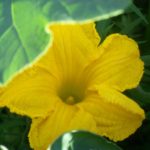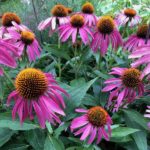New Moon Greetings – September 2, 2024
On Burdock

Perhaps your only exposure to burdock (Arctium lappa) is when the sticky burrs get stuck on your dogs coat or your clothes. This is the time of year that is likely to happen. It can be frustrating because the burrs are definately hard to remove. But that is actually one of the plant’s many attributes. The sticky burrs are a clever seed-disbursing system. By hitching a ride with animals or humans that walk by, the burdock plant ensures that its seeds are distrubuted to new spaces.
Burdock is a wild food and a medicinal herb. Both Western and Chinese herbal medicine recognize it as a healing plant. It tones and nourishes internal organs helping them to function in an optimal way. The plant’s long taproot is rich in minerals and used in traditional Japanese cooking, where it is known as gobo. Burdock is a biennial (only lives two years) and roots should be harvested during the first year.
Garden Ally
Many people think of burdock as a weed, but I don’t think that classification holds because it is a biennial. As long as the flower stalks are removed in the second year, the plant won’t produce seeds and it won’t live beyond that season. 
It can be a great garden ally. Burdock’s deep tap root is great at breaking up hard soil. Additionally it brings minerals up from the subsoil. If you are familiar with the plant, you know that it produces a massive amount of leaves, all of which can be composted or used as multch. And bees love the strange little purple flowers. Just be sure to cut them off before they go to seed.
Velcro Connection
 One of the things I find fascintating about burdock is that it provided the inspiration for a product we use all the time. A Swiss engineer, George de Mestral, began studying the burdock seed pods in the 1940s, trying to replicate their stickiness. It took him years, but he finally succeeded in producing the product we call Velcro. That Velcro-stickiness highlights one of burdock’s many energetic qualities – tenacity. All plants have a mission to send their seeds out into the world, but burdock makes this happen in an ingenious way. The stickiness and committment to purpose are properties we can align with. Burdock of course has developed these attributes over a millenium, but we can choose to intentionally focus on our purpose with tenacity.
One of the things I find fascintating about burdock is that it provided the inspiration for a product we use all the time. A Swiss engineer, George de Mestral, began studying the burdock seed pods in the 1940s, trying to replicate their stickiness. It took him years, but he finally succeeded in producing the product we call Velcro. That Velcro-stickiness highlights one of burdock’s many energetic qualities – tenacity. All plants have a mission to send their seeds out into the world, but burdock makes this happen in an ingenious way. The stickiness and committment to purpose are properties we can align with. Burdock of course has developed these attributes over a millenium, but we can choose to intentionally focus on our purpose with tenacity.
 Other Engergetic Qualities
Other Engergetic Qualities
Some of burdock’s other energetic properties are groundedness and balance. The deep tap root keeps the plant stable and solidly connected to the earth. We can embrace these energetic properties as guide-posts any time we need them. However, it can be especially helpful during this time of changing seasons and somewhat challenging social discourse.
If you’ve come home recently with burrs on your pants or stuck on your dog’s coat, that could be a message to consciously embody burdock’s attributes. Stay grounded and balanced with mindfulness practice. But also stay focused with purpose and tenacity on whatever goals you have set for yourself.
About this Blog Post & and Global Healing Circles

This post is part of my lunar blog series. For the time being I’ll be posting on each new moon (not the new and full moon as I did the last few years because of some other writing projects). I’m posting this blog early because I’ll be traveling for the eclipse. Usually, blogs will post each new moon and will be related to plants and ideas featured in my book, Growing Mindful. or on other topics related to mindfulness, gardens, and intentional living. For more details and a list of past lunar blog posts, click here.
An invitation to healing circles. One of my new projects this year is partnering with other graduates of the IIQTC (Institute of Integral Qigong and Tai Chi) to offer virtual HeART of Body Compassionate Self Care Practice Circles based on qigong and tai chi. Check out the information here: Global Healing Circles or contact me if you need more information.



